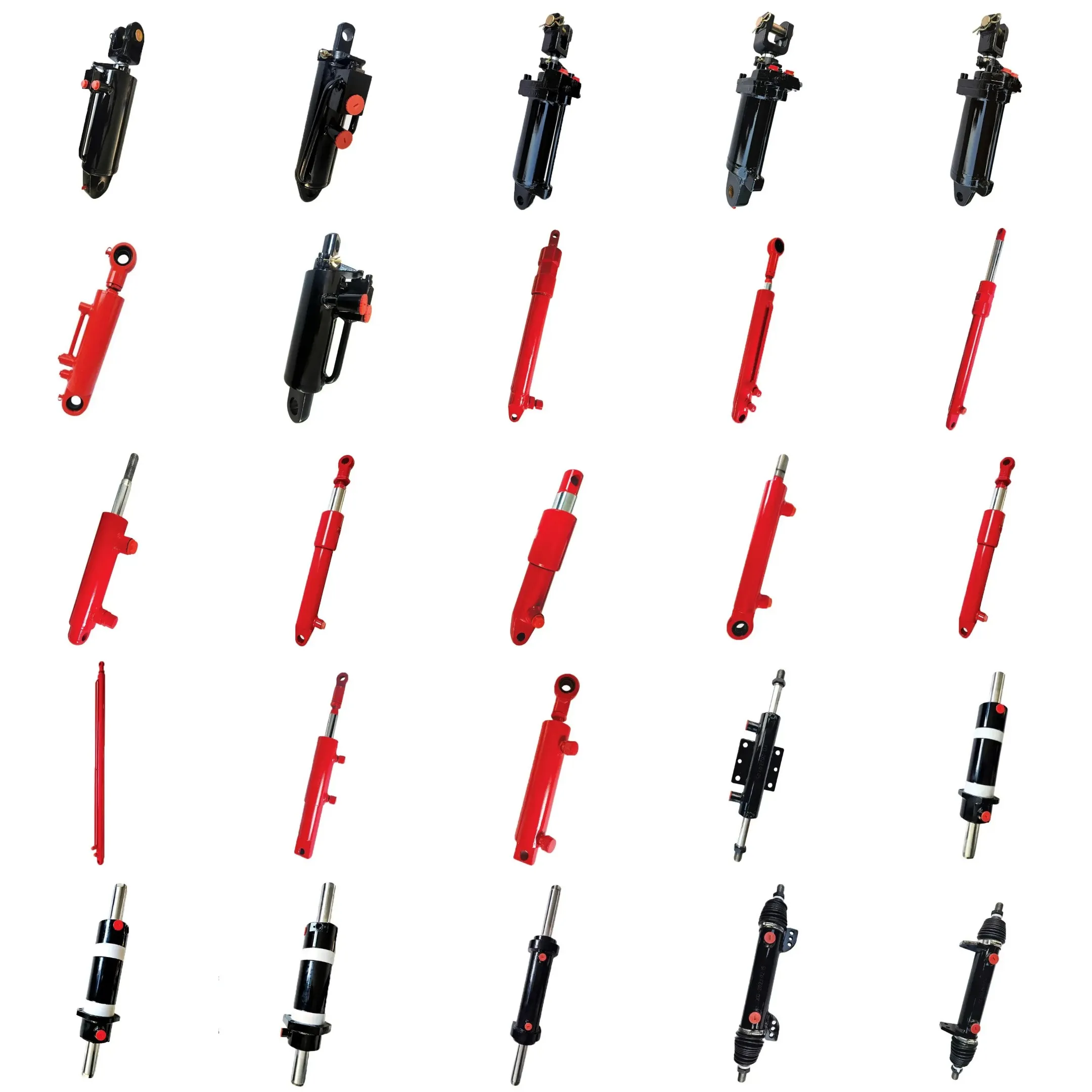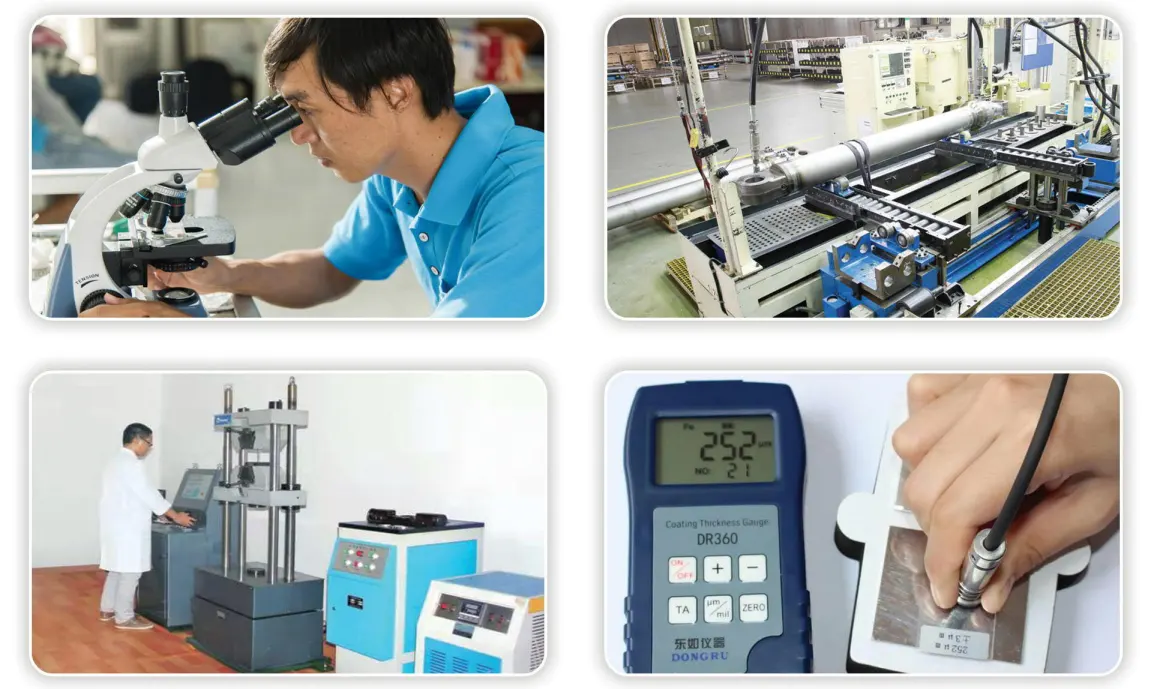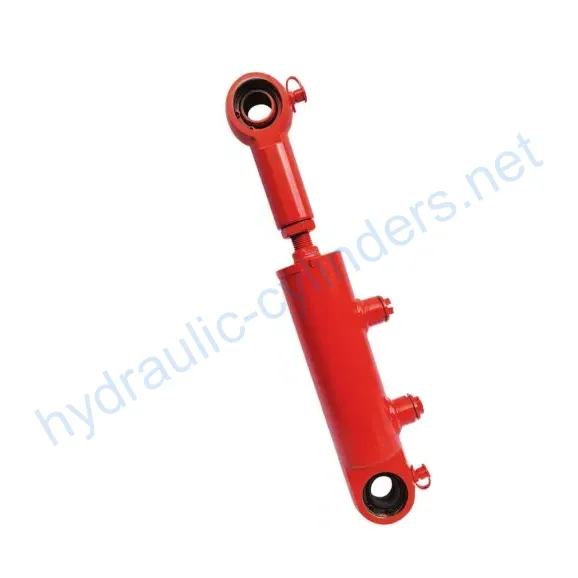Sanitation Vehicle Locking Hook Hydraulic Cylinder
Sanitation Vehicle Locking Hook Hydraulic Cylinder
Introduction to the Hydraulic Cylinder
The Sanitation Vehicle Locking Hook Hydraulic Cylinder is a crucial component designed to enhance the functionality of sanitation vehicles. This hydraulic cylinder operates by converting fluid pressure into mechanical force, enabling the locking and unlocking mechanisms for effective load management. The cylinder plays a vital role in securing equipment and attachments, ensuring safety and reliability during operations. With a cylinder diameter of 40mm and a rod diameter of 22mm, this hydraulic unit boasts a travel length of 50mm, making it ideal for various applications in sanitation vehicles. The installation distance of 305mm allows for versatile integration into existing systems, ensuring it meets the demands of modern sanitation operations.
Product Specifications
Key Parameters
- Cylinder Diameter: 40mm
- Rod Diameter: 22mm
- Travel Length: 50mm
- Installation Distance: 305mm
These specifications highlight the dimensions and capabilities of the hydraulic cylinder, offering a robust solution for various locking mechanisms in sanitation vehicles.
Features of the Hydraulic Cylinder
- High durability: Designed to withstand harsh operational conditions.
- Precision engineering: Ensures consistent performance and reliability.
- Easy installation: Compatible with standard mounting configurations.
- Excellent sealing: Prevents fluid leakage, enhancing efficiency.
- Customizable options: Tailored to meet specific customer requirements.
We specialize in manufacturing high-quality hydraulic cylinders that perfectly replace existing models, ensuring seamless integration and optimal performance.
Applications of the Hydraulic Cylinder
1. Sanitation Vehicle Operations
This hydraulic cylinder is primarily used in sanitation vehicles to operate locking hooks that secure waste containers. It ensures that containers are safely locked during transport, preventing spillage and enhancing safety for drivers and pedestrians alike. By facilitating the quick release and locking of containers, it increases operational efficiency in waste collection processes.
2. Refuse Collection Systems
In refuse collection systems, the hydraulic cylinder aids in the mechanism that lifts and tips containers into the collection vehicle. Its reliable function ensures that the lifting process is smooth, reducing wear on both the vehicle and the container. This contributes to a more environmentally friendly operation by minimizing spillage and ensuring that all waste is collected effectively.
3. Recycling Programs
In recycling programs, the hydraulic cylinder is employed to operate the mechanisms that sort and transport recyclable materials. Its precision and reliability help in managing the flow of materials, ensuring that the recycling process remains efficient and effective, thus promoting sustainability in waste management.
Design Considerations and Selection Criteria
1. Load Capacity
The load capacity of the hydraulic cylinder is a critical factor, determining how much weight it can safely handle without failure. This includes considering the maximum load that will be applied during operation, ensuring that the cylinder is robust enough to withstand the stresses involved. Proper load calculations prevent premature wear and extend the lifespan of the cylinder.
2. Sealing Performance
Effective sealing is essential for hydraulic cylinders to maintain pressure and prevent leakage. The choice of sealing materials, such as polyurethane or nitrile rubber, plays a significant role in ensuring long-term performance. These materials provide excellent resistance to wear and tear while maintaining a tight seal under operational pressures.
3. Durability and Longevity
Durability considerations include selecting high-quality materials and protective coatings that can withstand harsh environmental conditions. This is particularly important in sanitation applications where exposure to corrosive substances is common. A well-designed cylinder will feature robust construction to maximize service life and reduce the need for frequent replacements.
4. Safety Features
Safety is paramount in hydraulic systems. The design must include features that minimize risks of failure, such as pressure relief valves and fail-safe mechanisms. These components ensure that in the event of a malfunction, the system can safely release pressure and prevent accidents during operation.
5. Maintenance and Repair Considerations
Maintenance is crucial for the longevity of hydraulic cylinders. Design considerations should facilitate easy access to components for inspection and maintenance, including seals and lubrication points. Incorporating modular components can simplify repairs and reduce downtime, ensuring that the system remains operational.
Sealing and Lubrication
Proper sealing and lubrication are vital for the efficient operation of hydraulic cylinders. Various sealing components, such as piston and rod seals, are utilized to ensure a tight seal within the cylinder. Seals made from high-wear materials like polyurethane and nitrile rubber provide excellent resistance to abrasion and environmental factors.
The cylinder body and threaded end surfaces are meticulously treated to enhance wear resistance. Regular maintenance requires periodic lubrication with hydraulic oil to minimize friction and promote smooth operation. This not only extends the lifespan of the seals but also enhances overall system performance.
Regular Inspection and Preventive Maintenance
- Routine Inspections: Conduct regular visual inspections for signs of wear, leaks, or damage. Early detection of issues can prevent major failures.
- Lubrication Schedule: Establish a lubrication schedule to ensure that seals and moving parts are adequately lubricated, enhancing performance and reducing wear.
- 更换密封件: Regularly check seals for signs of wear and replace them as needed to maintain optimal sealing performance and prevent fluid loss.
Preventive maintenance measures are essential to ensure the hydraulic cylinder operates effectively and safely, minimizing the risk of unexpected failures.
Installation Guidelines
Proper installation of the hydraulic cylinder is crucial for optimal performance. Start by ensuring that the mounting surfaces are clean and free of debris. Align the cylinder accurately with the mounting brackets and secure it using the recommended bolts and fasteners. It is important to use appropriate installation brackets to prevent misalignment, which can lead to premature wear or failure.
Follow the manufacturer??s guidelines for torque specifications during installation to ensure proper tightness without over-compressing the components. After installation, check for proper alignment and adjust as necessary. Finally, once installed, conduct a functional test to ensure that the cylinder operates smoothly and effectively within the system.
Common Maintenance Tasks
1. Regular Inspections
Conducting regular inspections is vital for identifying potential issues before they escalate. Check for any signs of leakage around seals, verify that moving parts are functioning smoothly, and assess the overall condition of the cylinder. Early intervention can prevent costly repairs and downtime.
2. Proper Lubrication
Ensuring that the hydraulic cylinder is adequately lubricated is essential for maintaining optimal performance. Use the recommended hydraulic oils and apply them to the appropriate seals and moving parts. Proper lubrication reduces friction and wear, enhancing the longevity of the cylinder.
3. Seal Replacement and Calibration Checks
Regularly replace seals as part of a maintenance routine to prevent leaks and maintain pressure within the system. Calibration checks are equally important to ensure that the cylinder operates within specified parameters, providing accurate performance and preventing failures.
Safety Considerations and Environmental Factors
When working with hydraulic cylinders, safety measures are crucial. Ensure that all personnel are trained in the safe handling and operation of hydraulic systems. Implement proper locking mechanisms, such as the locking hook in this hydraulic cylinder, to prevent accidental releases during maintenance or operation. In addition, consider environmental factors by ensuring that hydraulic fluid is managed responsibly to prevent spills and contamination.
Troubleshooting and Common Issues
- Leakage: If you notice hydraulic fluid leaking from the cylinder, check the seals for wear and replace them as necessary.
- Loss of Pressure: A loss of pressure may indicate a blockage or a leak in the system. Inspect the lines and connections for any signs of damage.
- Sticking or Jamming: If the cylinder is not moving smoothly, check for debris in the system and ensure that it is properly lubricated.
Addressing these common issues promptly can help maintain the efficiency and safety of hydraulic operations.
For effective troubleshooting, always refer to the manufacturer??s guidance and maintain a log of any recurring issues to identify patterns that may require further intervention.

About Our Company
We are a leading manufacturer of hydraulic cylinders, providing a wide range of high-quality products for various applications. Our commitment to excellence has positioned us as a frontrunner in both domestic and international markets. We pride ourselves on delivering professional-grade hydraulic solutions, backed by international certifications that ensure reliability and safety.
Our production facility is equipped with state-of-the-art machinery, allowing us to offer customizable solutions tailored to meet specific customer requirements. Additionally, we provide comprehensive after-sales support, ensuring that our clients receive the assistance they need throughout the lifecycle of our products.

Author: lyl
参观我们的 VR 工厂
通过以下方式参观我们的 VR 工厂
液压缸应用:


